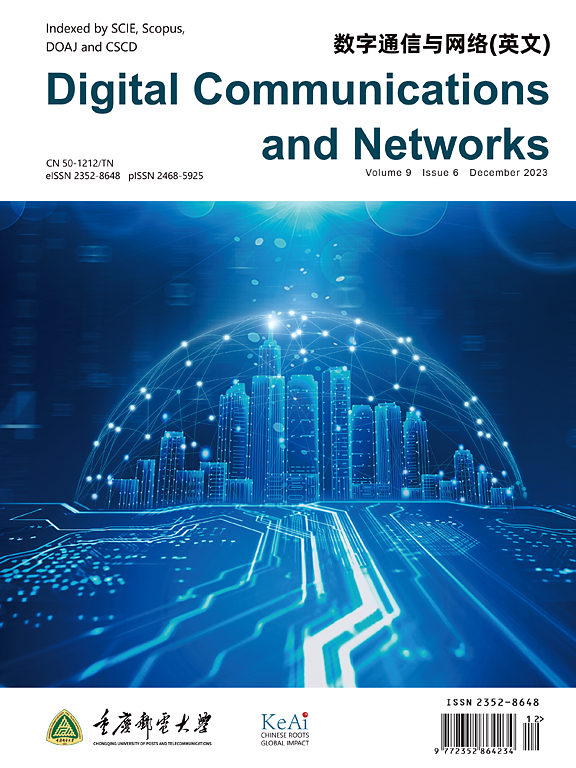利用射频全息图张量定位多个 RFID 标签的框架
IF 7.5
2区 计算机科学
Q1 TELECOMMUNICATIONS
引用次数: 0
摘要
在本文中,我们提出了一个基于深度神经网络(DNN)的框架,该框架使用射频(RF)全息图张量来定位多个超高频(UHF)无源射频识别(RFID)标签。射频全息图张量在观测和空间定位之间表现出很强的关系,有助于提高对动态环境和设备的鲁棒性。由于RFID数据经常受到噪声的影响,我们实现了两种类型的深度神经网络架构来清除射频全息图张量。利用标签之间的空间关系,深度网络有效地缓解了由多径传播和相位包裹引起的全息图张量中的假峰。与使用深度网络作为分类器的基于指纹的定位系统相比,我们提出的框架中的深度网络将定位任务视为一个回归问题,保留了指纹之间的模糊性。我们还提出了一种直观的峰值查找算法,利用消毒液全息图张量获得估计位置。该框架采用商用RFID设备实现,并通过大量实验验证了其优越的性能。本文章由计算机程序翻译,如有差异,请以英文原文为准。
A framework for locating multiple RFID tags using RF hologram tensors
In this paper, we present a Deep Neural Network (DNN) based framework that employs Radio Frequency (RF) hologram tensors to locate multiple Ultra-High Frequency (UHF) passive Radio-Frequency Identification (RFID) tags. The RF hologram tensor exhibits a strong relationship between observation and spatial location, helping to improve the robustness to dynamic environments and equipment. Since RFID data is often marred by noise, we implement two types of deep neural network architectures to clean up the RF hologram tensor. Leveraging the spatial relationship between tags, the deep networks effectively mitigate fake peaks in the hologram tensors resulting from multipath propagation and phase wrapping. In contrast to fingerprinting-based localization systems that use deep networks as classifiers, our deep networks in the proposed framework treat the localization task as a regression problem preserving the ambiguity between fingerprints. We also present an intuitive peak finding algorithm to obtain estimated locations using the sanitized hologram tensors. The proposed framework is implemented using commodity RFID devices, and its superior performance is validated through extensive experiments.
求助全文
通过发布文献求助,成功后即可免费获取论文全文。
去求助
来源期刊

Digital Communications and Networks
Computer Science-Hardware and Architecture
CiteScore
12.80
自引率
5.10%
发文量
915
审稿时长
30 weeks
期刊介绍:
Digital Communications and Networks is a prestigious journal that emphasizes on communication systems and networks. We publish only top-notch original articles and authoritative reviews, which undergo rigorous peer-review. We are proud to announce that all our articles are fully Open Access and can be accessed on ScienceDirect. Our journal is recognized and indexed by eminent databases such as the Science Citation Index Expanded (SCIE) and Scopus.
In addition to regular articles, we may also consider exceptional conference papers that have been significantly expanded. Furthermore, we periodically release special issues that focus on specific aspects of the field.
In conclusion, Digital Communications and Networks is a leading journal that guarantees exceptional quality and accessibility for researchers and scholars in the field of communication systems and networks.
 求助内容:
求助内容: 应助结果提醒方式:
应助结果提醒方式:


